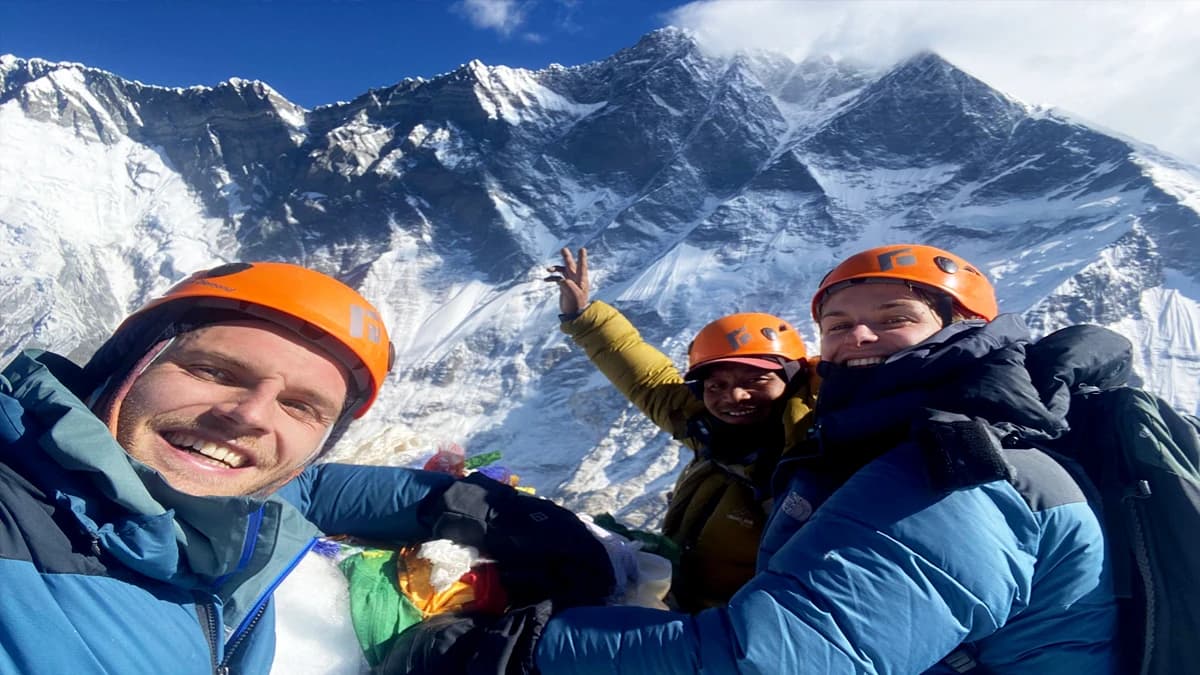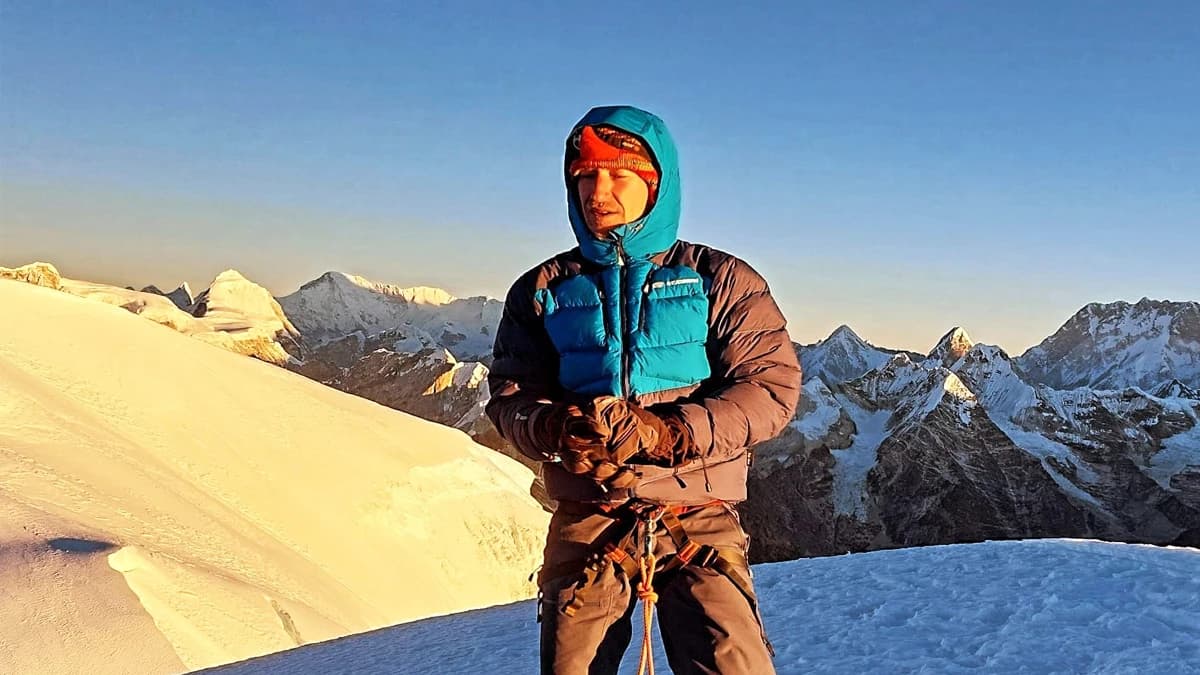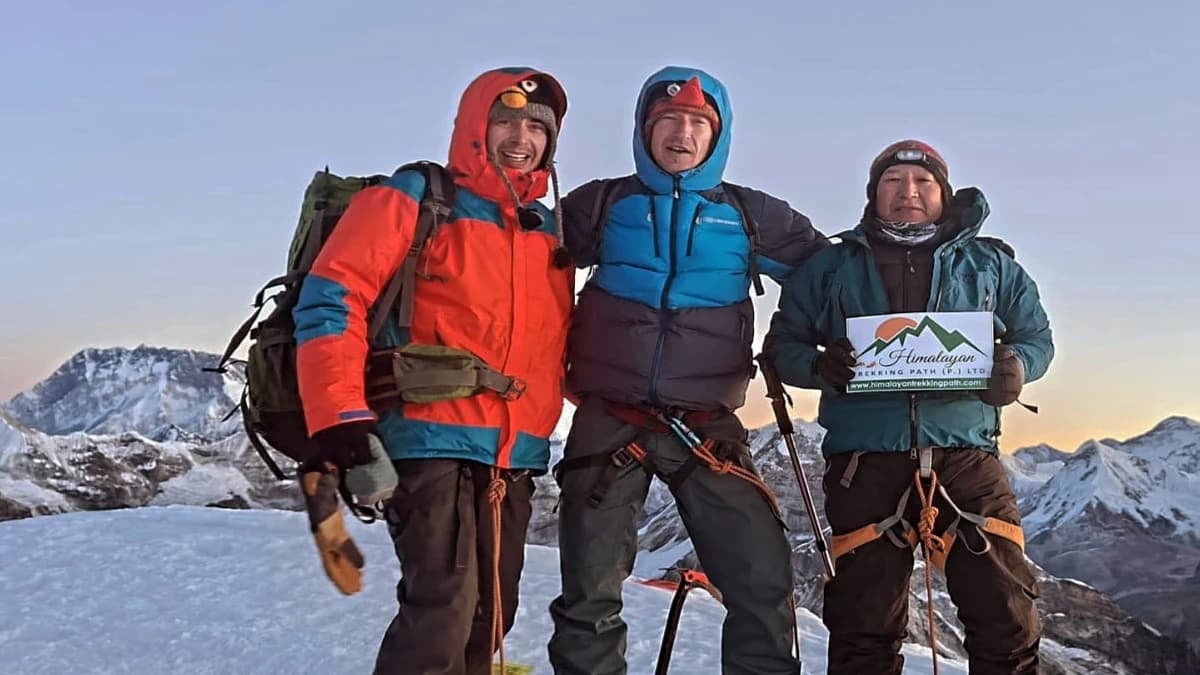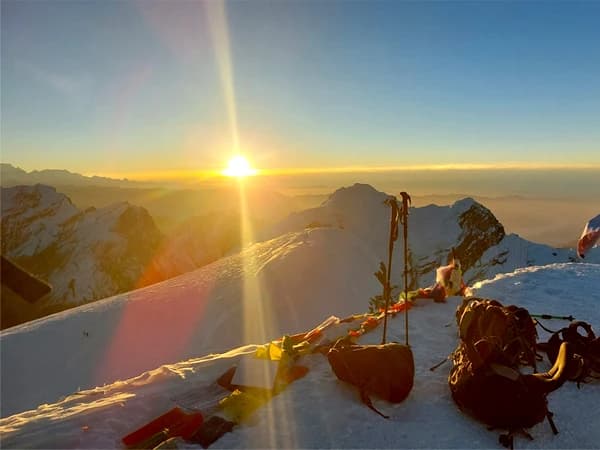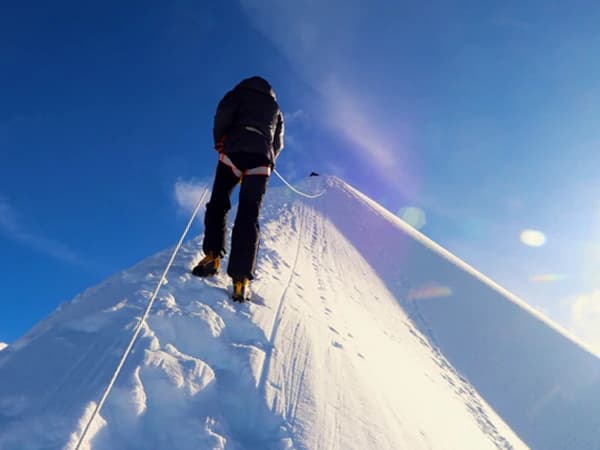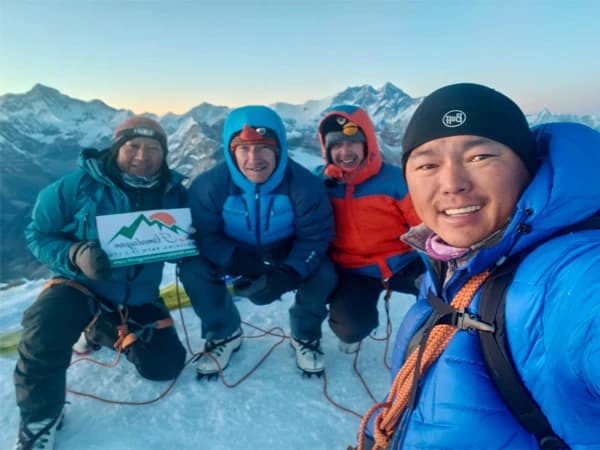Mera & Island Peak Climbing Via Amphu Labsta Pass
Mera Peak and Island Peak climbing present an exhilarating adventure in the Khumbu region of Nepal. The combination of the two peaks in the Hinku and Imja Valleys offers a thrilling yet fulfilling summit experience, showcasing the world’s highest peaks from a close vantage point. Mera Peak (6474m) and Island Peak (6165m) are among the most sought-after climbing destinations in the Everest region. In addition to the trekking experience, these peaks provide a unique opportunity to merge trekking with summiting a snow-capped peak. Mera Peak is recognized as the highest trekking peak in Nepal, while Island Peak is also well-known. The Amphu Laptsa Pass (or Amphu Labtsa Pass) connects both peaks. The duration of the climbs varies based on your pace and interests, ranging from 18 to 25 days, depending on where you start and finish your journey. Join the Himalayan Trekking Path, a company of local experts, for exceptional management, service, hospitality, and expertise, all at an affordable price.
Highlights of Mera Island Peak Climbing
- Summit Nepal’s highest trekking peak at 6,476m for unbeatable Himalayan views.
- Take in a 360° panorama of five 8000m giants – Everest, Lhotse, Makalu, Cho Oyu, and Kangchenjunga.
- Trek through untouched valleys, ancient forests, and remote Sherpa villages.
- Experience a thrilling climb suited for fit trekkers with basic mountaineering skills.
- Explore the quiet Hinku Valley wilderness.
- Acclimatize gradually with a scenic and less-crowded approach route.
- Camp under star-filled skies near glaciers and towering ice walls.
- Learn essential climbing techniques from seasoned guides on real snow and ice.
- Discover the raw beauty of Nepal beyond the mainstream Everest trail.
- Achieve your first Himalayan summit – where adventure meets serenity.
- Cross the Amphu Labsa Pass and ascend the Island Peak
- Explore the Everest Base Camp Trek route and Imja Valley
Mera & Island Peak Climbing Itinerary
Your adventure begins in Kathmandu, with a scenic flight to Lukla, the gateway to the Khumbu region. From here, you trek through charming villages like Paiya, Ramailo Danda, and Chhatra Khola, gradually gaining altitude and immersing yourself in the remote beauty of the Hinku Valley. Passing through Kothe and Tagnang, you reach Khare, the base for Mera Peak.
From Khare, the expedition enters the stunning Upper Hinku Valley, leading to Mera High Camp. On summit day, you ascend Mera Peak (6,476m)—Nepal’s highest trekking peak—where a 360° Himalayan panorama awaits, featuring Everest, Lhotse, Makalu, Cho Oyu, and Kangchenjunga.
After the summit, you traverse the remote Amphu Labtsa Pass (5,845m)—a technical and challenging high-altitude crossing that connects Hinku with Imja Valley. This dramatic route leads you to the base of Island Peak (6,189m). Following proper acclimatization, you make a thrilling ascent using ropes and crampons.
From Island Peak, descend through the vibrant Sherpa heartland, passing Chhukung, Namche Bazaar, and finally returning to Lukla. A scenic flight brings you back to Kathmandu, completing this ultimate double-summit Himalayan experience.
Is Mera Island Peak Suitable for Me?
The Mera–Island Peak expedition involves climbing two of Nepal’s highest trekking peaks in a single journey, making it a demanding but rewarding adventure. It is suitable for those with strong physical fitness, high-altitude trekking experience, and basic mountaineering skills.
Mera Peak (6,476m) is higher but less technical. It requires good endurance and the ability to trek at extreme altitude using crampons and an ice axe, often with minimal rope work. Island Peak (6,189m), though slightly lower, is more technical. It involves steep ice sections, fixed ropes, ladders over crevasses, and exposed ridgelines—demanding familiarity with equipment like harnesses, jumars, and abseiling devices.
Completing both peaks means spending over three weeks in the mountains, often above 5,000m. Acclimatization, stamina, and mental toughness are crucial. If you’ve done high-altitude treks like Everest Base Camp or Kilimanjaro and have basic climbing training, this challenge may suit you. However, if you lack experience with altitude or mountaineering gear, this combination may be too advanced for a first expedition.
Overall, Mera Island Peak is ideal for experienced trekkers preparing for bigger mountains. If you're new to climbing, consider starting with Mera Peak alone.
Mera and Island Peak Climbing gear
Climbing Mera Peak (6,476m) and Island Peak (6,189m) in Nepal involves high-altitude trekking and technical mountaineering. Since you're planning to climb both, you’ll need a combined gear list that covers trekking, glacier travel, and summit pushes for both peaks.
Below is a comprehensive gear list broken into key categories:
CLIMBING GEAR (Technical)
- Ice axe (standard mountaineering)
- Crampons (compatible with your boots)
- Climbing harness (lightweight, adjustable)
- Helmet (climbing-rated)
- Carabiners (2–3 locking, 2–3 non-locking)
- Prusik loops (for crevasse rescue)
- Ascender (e.g., Petzl Tibloc or handled ascender)
- Belay/Rappel device (ATC or similar)
- Sling/webbing (1–2 x 120cm)
- Rope (provided by the guide, usually, but confirm)
- Glacier glasses (cat 4 UV protection)
- Headlamp with spare batteries
FOOTWEAR
- Both peaks are cold and require insulated boots.
- Mountaineering boots (double-layer or insulated for 6,000m+; e.g., La Sportiva G2 Evo or Scarpa Phantom 6000)
- Trekking boots (waterproof, broken-in)
- Camp shoes/sandals (for teahouse/camp)
- Gaiters (essential for deep snow/glacier)
- Trekking socks (3–5 pairs)
- Summit socks (1–2 pairs thick wool)
CLOTHING
- Layering is crucial for high-altitude trekking and climbing.
- Base Layer
- Moisture-wicking T-shirts (2–3)
- Thermal tops and bottoms (2 sets)
- Mid Layer
- Fleece jacket or pullover
- Softshell jacket/pants
- Insulated down jacket (expedition weight)
- Outer Layer (Shell)
- Hardshell jacket (Gore-Tex or similar)
- Hardshell pants (with full zips if possible)
- Summit Layer (Extreme Cold)
- Down suit (optional, or heavy down parka + insulated pants)
- Balaclava
- Buff or neck gaiter
- Warm hat (windproof)
- Sun hat/cap
- Glacier gloves (1 pair)
- Warm mittens (1 pair, expedition weight)
- Lightweight liner gloves (2 pairs)
BACKPACKS & BAGS
- Trekking backpack (50–65L)
- Climbing daypack (30–40L)
- Duffel bag (for porters/yaks, ~80–100L)
- Dry bags/stuff sacks
- Rain cover (for pack)
SLEEPING
- Sleeping bag (rated to -20°C to -30°C)
- Sleeping bag liner (adds warmth)
FOOD & HYDRATION
- Water bottles (2 x 1L)
- Thermos (1L for summit days)
- Hydration system (optional, may freeze above 5,000m)
- Water purification tablets/drops
- Snacks (energy bars, nuts, gels)
MISCELLANEOUS
- Trekking poles (collapsible, with snow baskets)
- Personal first aid kit (with altitude meds like Diamox)
- Sunglasses (UV400, Category 3 or 4)
- Sunscreen (SPF 50+)
- Lip balm (SPF)
- Headlamp with extra batteries
- Personal toiletries
- Quick-dry towel
- Hand sanitizer
- Wet wipes
- Toilet paper
- Altimeter/watch (optional)
- Power bank + solar charger (optional)
- Travel insurance (with rescue coverage)
Mera & Island Peak Climbing Cost for 2025-2026
The cost for climbing Mera Peak and Island Peak varies based on duration, season, service, and group size, ranging from USD 3000 to USD 5000 per person. Our 22-day combined climbing package for Mera and Island Peak starts at USD 3000 to USD 4000 per person, depending on the group size. If you are climbing solo, the cost is USD 4,000. Group rates are discounted based on the number of climbers. This package includes a porter, guide, domestic flight, accommodation, meals, permits, and other items as specified in the package details. Book the Mera Peak and Island Peak package with Himalayan Trekking Path Pvt. Ltd and take advantage of our special offer. We are always prepared to customize your package and pricing according to your interests. Below is the cost breakdown for Mera and Island Peak based on group size:
- The cost for Mera Peak & Island Peak is USD 4000 for solo climbers.
- For groups of 2 to 6 people, the cost is USD 3500 per person.
- For groups of 7 to 10 people, the cost is USD 3000 per person.

